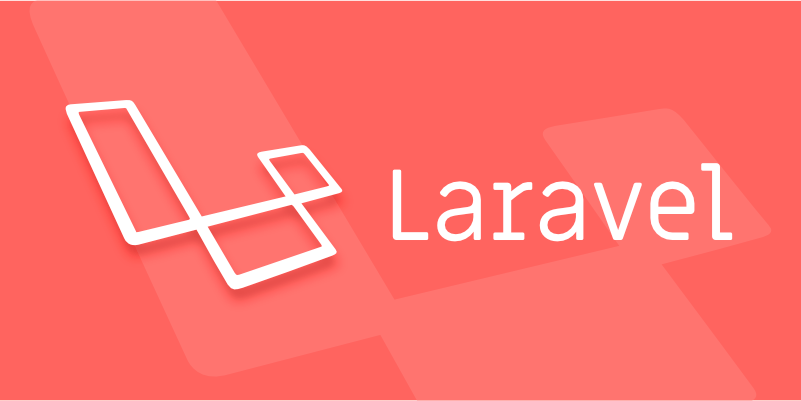Laravel supports a variety of cache drivers, suitable for different scenarios and performance requirements. 1. File driver is suitable for small applications, with simple configuration but low efficiency, and is not suitable for production environments; 2. Database driver realizes data persistence and sharing, with low performance, and is suitable for scenarios with low performance requirements; 3. Redis driver has high performance, supports distributed architecture and a complete expiration mechanism, and is the first choice for high performance; 4. Memcached driver is lightweight and efficient, suitable for page or object cache, but does not support complex data types; 5. Array driver is used for testing, and is only valid during the request life cycle and does not persist data. Just select the appropriate driver according to the project size and deployment situation.

Laravel supports a variety of cache drivers, each suitable for different scenarios and performance requirements. Choosing the right cache driver can significantly improve application response speed, while also adapting to project deployment environments of different sizes.

1. File Cache Driver: Suitable for small applications
This is the default cache method of Laravel. The data is stored in the server file system and is usually located in storage/framework/cache/data directory.
The advantage is that it is simple to configure and requires no additional services, and is suitable for projects with a development environment or small visits. The disadvantage is that the read and write efficiency is low, especially when there is high concurrency, it is easy to become a bottleneck.

Recommended usage:
- Can be used in the development stage
- Not recommended for production environments or high concurrency scenarios
2. Database cache driver: structured but slightly slow
This driver saves cached data in database tables. Laravel provides migration commands to generate cached tables:

php artisan cache:table
Its benefit is that data is persistent and cached content can be shared between multiple servers. However, because every read and write has to pass through the database, the performance is not as good as memory cache.
Applicable scenarios:
- Multi-server shared cache
- Need to cache data persistence
- Not high performance requirements
3. Redis cache driver: the first choice for high performance
Redis is one of the most commonly used caching solutions at present, supports rich data types, is fast and suitable for handling large number of concurrent requests.
Laravel uses the Predis or PhpRedis extension to connect to the Redis server. To configure, you only need to fill in the Redis host address, port and other information.
Advantages include:
- Supports distributed architecture
- Complete data expiration mechanism
- Performance is much higher than file and database
If your application requires high-performance caching, especially API-type services, Redis is almost a must.
4. Memcached cache driver: lightweight and efficient memory cache
Memcached is an old-fashioned memory caching system. Although it has fewer functions than Redis, it is lighter and more efficient in some scenarios.
Laravel supports integration with Memcached extensions installed through PECL. The Memcached server address and port are required to be specified during configuration.
Features:
- Simple and easy to use
- Fast memory operation
- Complex data types (such as lists, collections) are not supported
Suitable for page caching or object caching, but not for scenarios where advanced data structures are required.
5. Array cache driver: for testing, not lasting
The Array driver saves the cache in a PHP array and is only valid for the current request lifecycle. Commonly used to simulate cache behavior in local or unit tests.
Notice:
- Reset every request
- Not suitable for actual use
- You can quickly verify that the logic is correct
Different cache drivers are suitable for different scenarios. File and Array are more inclined to test and small projects; Database is suitable for scenarios that require persistence; while Redis and Memcached are more inclined to high-performance requirements in production environments.
Basically all this is it, just choose the right one based on the project size and deployment situation.
The above is the detailed content of Explain different Laravel Caching drivers.. For more information, please follow other related articles on the PHP Chinese website!

Hot AI Tools

Undress AI Tool
Undress images for free

Undresser.AI Undress
AI-powered app for creating realistic nude photos

AI Clothes Remover
Online AI tool for removing clothes from photos.

Clothoff.io
AI clothes remover

Video Face Swap
Swap faces in any video effortlessly with our completely free AI face swap tool!

Hot Article

Hot Tools

Notepad++7.3.1
Easy-to-use and free code editor

SublimeText3 Chinese version
Chinese version, very easy to use

Zend Studio 13.0.1
Powerful PHP integrated development environment

Dreamweaver CS6
Visual web development tools

SublimeText3 Mac version
God-level code editing software (SublimeText3)
 Working with pivot tables in Laravel Many-to-Many relationships
Jul 07, 2025 am 01:06 AM
Working with pivot tables in Laravel Many-to-Many relationships
Jul 07, 2025 am 01:06 AM
ToworkeffectivelywithpivottablesinLaravel,firstaccesspivotdatausingwithPivot()orwithTimestamps(),thenupdateentrieswithupdateExistingPivot(),managerelationshipsviadetach()andsync(),andusecustompivotmodelswhenneeded.1.UsewithPivot()toincludespecificcol
 Sending different types of notifications with Laravel
Jul 06, 2025 am 12:52 AM
Sending different types of notifications with Laravel
Jul 06, 2025 am 12:52 AM
Laravelprovidesacleanandflexiblewaytosendnotificationsviamultiplechannelslikeemail,SMS,in-appalerts,andpushnotifications.Youdefinenotificationchannelsinthevia()methodofanotificationclass,andimplementspecificmethodsliketoMail(),toDatabase(),ortoVonage
 Understanding Dependency Injection in Laravel?
Jul 05, 2025 am 02:01 AM
Understanding Dependency Injection in Laravel?
Jul 05, 2025 am 02:01 AM
Dependency injection automatically handles class dependencies through service containers in Laravel without manual new objects. Its core is constructor injection and method injection, such as automatically passing in the Request instance in the controller. Laravel parses dependencies through type prompts and recursively creates the required objects. The binding interface and implementation can be used by the service provider to use the bind method, or singleton to bind a singleton. When using it, you need to ensure type prompts, avoid constructor complications, use context bindings with caution, and understand automatic parsing rules. Mastering these can improve code flexibility and maintenance.
 Strategies for optimizing Laravel application performance
Jul 09, 2025 am 03:00 AM
Strategies for optimizing Laravel application performance
Jul 09, 2025 am 03:00 AM
Laravel performance optimization can improve application efficiency through four core directions. 1. Use the cache mechanism to reduce duplicate queries, store infrequently changing data through Cache::remember() and other methods to reduce database access frequency; 2. Optimize database from the model to query statements, avoid N 1 queries, specifying field queries, adding indexes, paging processing and reading and writing separation, and reduce bottlenecks; 3. Use time-consuming operations such as email sending and file exporting to queue asynchronous processing, use Supervisor to manage workers and set up retry mechanisms; 4. Use middleware and service providers reasonably to avoid complex logic and unnecessary initialization code, and delay loading of services to improve startup efficiency.
 Managing database state for testing in Laravel
Jul 13, 2025 am 03:08 AM
Managing database state for testing in Laravel
Jul 13, 2025 am 03:08 AM
Methods to manage database state in Laravel tests include using RefreshDatabase, selective seeding of data, careful use of transactions, and manual cleaning if necessary. 1. Use RefreshDatabasetrait to automatically migrate the database structure to ensure that each test is based on a clean database; 2. Use specific seeds to fill the necessary data and generate dynamic data in combination with the model factory; 3. Use DatabaseTransactionstrait to roll back the test changes, but pay attention to its limitations; 4. Manually truncate the table or reseed the database when it cannot be automatically cleaned. These methods are flexibly selected according to the type of test and environment to ensure the reliability and efficiency of the test.
 Choosing between Laravel Sanctum and Passport for API authentication
Jul 14, 2025 am 02:35 AM
Choosing between Laravel Sanctum and Passport for API authentication
Jul 14, 2025 am 02:35 AM
LaravelSanctum is suitable for simple, lightweight API certifications such as SPA or mobile applications, while Passport is suitable for scenarios where full OAuth2 functionality is required. 1. Sanctum provides token-based authentication, suitable for first-party clients; 2. Passport supports complex processes such as authorization codes and client credentials, suitable for third-party developers to access; 3. Sanctum installation and configuration are simpler and maintenance costs are low; 4. Passport functions are comprehensive but configuration is complex, suitable for platforms that require fine permission control. When selecting, you should determine whether the OAuth2 feature is required based on the project requirements.
 Implementing Database Transactions in Laravel?
Jul 08, 2025 am 01:02 AM
Implementing Database Transactions in Laravel?
Jul 08, 2025 am 01:02 AM
Laravel simplifies database transaction processing with built-in support. 1. Use the DB::transaction() method to automatically commit or rollback operations to ensure data integrity; 2. Support nested transactions and implement them through savepoints, but it is usually recommended to use a single transaction wrapper to avoid complexity; 3. Provide manual control methods such as beginTransaction(), commit() and rollBack(), suitable for scenarios that require more flexible processing; 4. Best practices include keeping transactions short, only using them when necessary, testing failures, and recording rollback information. Rationally choosing transaction management methods can help improve application reliability and performance.
 Handling HTTP Requests and Responses in Laravel.
Jul 16, 2025 am 03:21 AM
Handling HTTP Requests and Responses in Laravel.
Jul 16, 2025 am 03:21 AM
The core of handling HTTP requests and responses in Laravel is to master the acquisition of request data, response return and file upload. 1. When receiving request data, you can inject the Request instance through type prompts and use input() or magic methods to obtain fields, and combine validate() or form request classes for verification; 2. Return response supports strings, views, JSON, responses with status codes and headers and redirect operations; 3. When processing file uploads, you need to use the file() method and store() to store files. Before uploading, you should verify the file type and size, and the storage path can be saved to the database.






